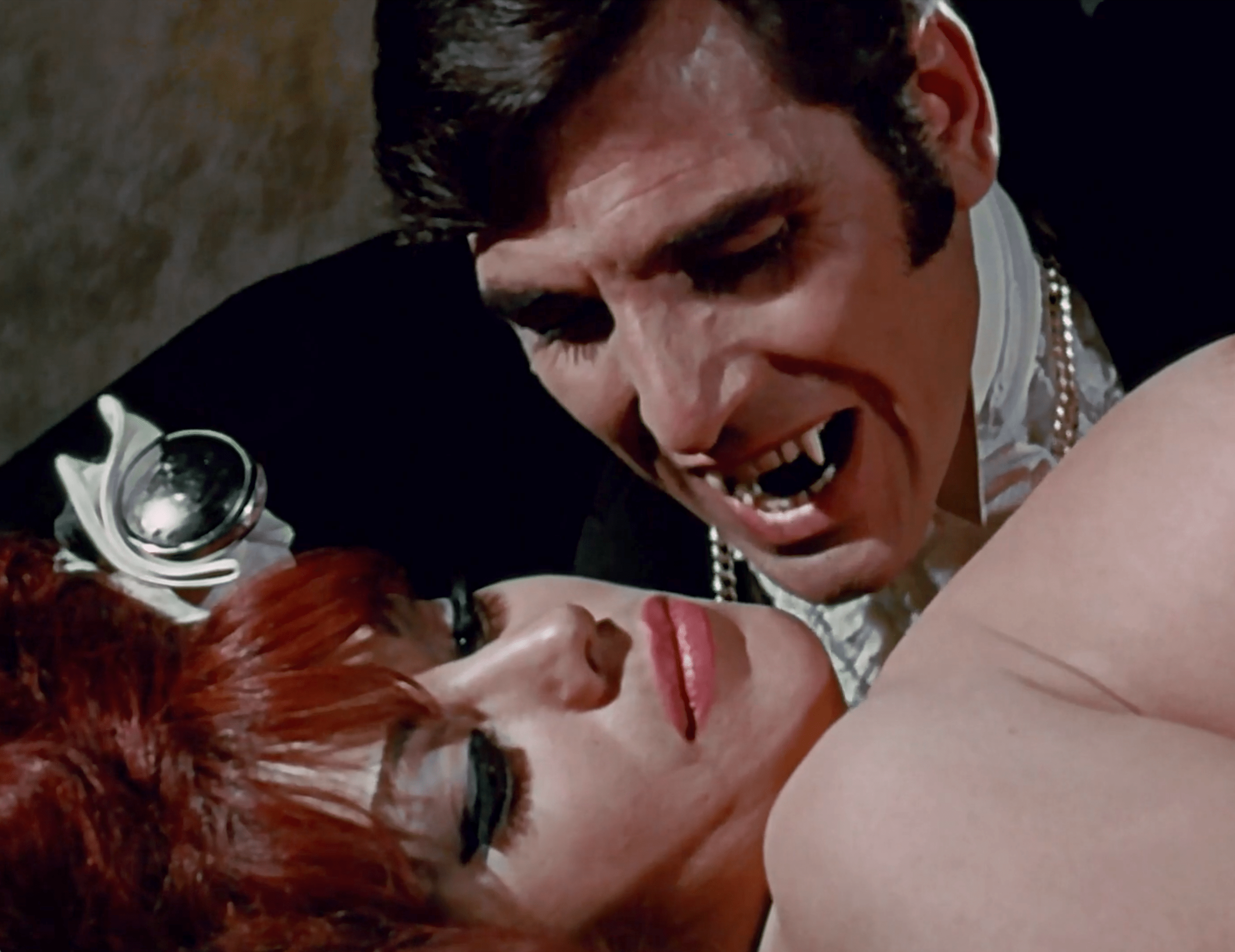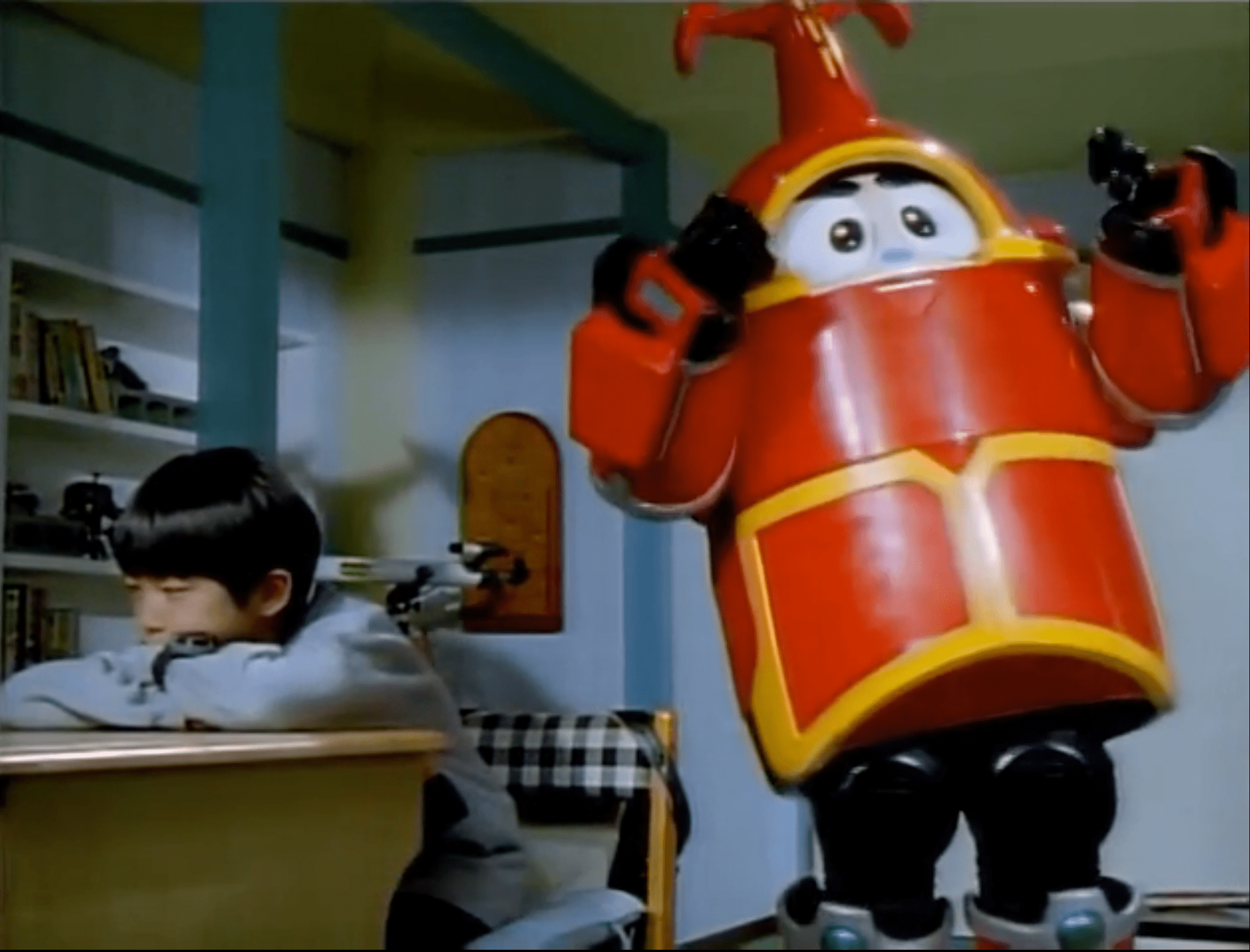
Yoshiyuki Okamura and Tetsuo Hara’s manga, Fist Of The North Star, was the best-selling manga of the 1980s. Okamura AKA Buronson wrote the stories and Hara illustrated them. Together, they produced 245 issues.
Over the years, Fist of The North Star went through the standard evolution, from manga to television anime, to feature film anime, to live action movie. Along the way, it also became a video game, pachinko machine, and a stage musical.

Whether it is the manga, the anime, or the film, Fist of The North Star is an intentionally over-the-top, frantic barrage of macho posturing, muscles, and martial arts. As ridiculously overblown as it is, it is more serious than a simple parody. There appears to be a genuine attempt at storytelling and drama, but everything is so exaggerated, it is hard to make out exactly who the characters are and what they want.
The most grotesque distortions are made in the arena of gender. Fist of The North Star polarizes the genders to such disparate extremes that the characters cease to even resemble humans. Male characters are choked with pile upon pile of anatomically impossible muscles. They have thick veiny necks that support tiny, little heads. Women are anorexically thin with pale, white skin and giant eyes. Men bellow and growl, while women stutter and beg in little high-frequency utterances. Men move the plot forward through never-ending bouts of violence, while the women do little more than watch, gasp, and cry. Without the novelty of the visuals, the film would be pretty dreary, but as it is, it keeps trying to outdo itself, which can get pretty funny.
Each new male character has to be more muscular and imposing than the previous one, resulting in ridiculous tangles of lumpy flesh that look like some kind of demented Rubens painting. Of course, Rubens’ paintings didn’t swell up and explode like the men in Fist Of The North Star,but had animation been available in 17th century Antwerp, who knows what might have been.

The byzantine plot and enormous cast make the film very hard to follow. I had to take notes just to keep the names straight. It all takes place in a Mad Max-style post-apocalyptic world where everyone dresses like a heavy metal S&M biker barbarian, and scrounges all day in the dust searching for food and water. Giant warlords stomp around trying to prove whose biceps are bigger, while everyone around them cowers and whines. It’s basically a testosterone-fueled, gory, homoerotic, feminist nightmare.

For reasons unknown, there are two mythical, magical martial art styles that have arisen from the ruble and are in a fight for supremacy. Our taciturn hero Kenshiro represents the Hokuto Shinken style, which enables the practitioner to make his opponent swell up and explode. He is pitted against a host of lumpy leviathans who practice the Nanto Seiken style, but there is little point in trying to make sense of it all. It's more fun to just watch them destroy each other in giant blurry orgies of blood splashing, eyeball popping morasses of motion lines, while they bellow pronouncements about domination. It’s especially fun when Kenshiro pulls out all the stops and bursts into a frenetic cloud of hands and feet whilst screaming, “Ah, ta, ta, ta, ta, ta, ta, ta, ta!”, in a falsetto imitation of Bruce Lee.

The bloody goo and gunk that flies out of people's skulls and squirts out of the severed intestines is the foremost reason to watch the film, not the drama or the story. Unfortunately, there is much less gore in the live-action version from 1995. Lord save us from the live-action version from 1995.

Most of the live-action film is so awful, it feels like they are trying to make fun of the anime. It’s hard to believe the actors are serious, but they are. The blurred barrage of flying fist scenes from the anime become hilariously inept mimes of high-speed hand flopping. It's hard to imagine how the actors stopped themselves from laughing.
Tony Randel, the director, was famous for having directed several of the Hellraiser films. Jacques Haitkin, the cinematographer, shot A Nightmare on Elm Street and a personal favorite of mine, Shocker. The two men managed to assemble an impressive cast of 80’s B-list actors for Fist Of The North Star, including Tracey Walter, Melvin Van Peebles, Chris Penn, Malcolm McDowell, and Downtown Julie Brown. It’s a tour de force of lackluster acting underpinned by horrible scriptwriting. Without extensive prior knowledge of the series, it would be completely impossible to follow the live-action film.
Even with all these strikes against it, Fist Of The North Star still could have worked if they had kept up the high level of graphic violence, but except for a few frames in the climactic fight scene, the violence is completely tame.

I must admit that I do truly appreciate the manga-to-movie pipeline. The relatively cheaper world of manga enables a wide range of artists to render their ideas in a quick, cheap, and accessible way. This gives rise to a wonderfully diverse array of creative and innovative new material. This pool can then provide inspiration for directors, writers, game designers, or cosplay enthusiasts to create all manner of new works. It doesn’t always turn out well, as evidenced by Fist Of The North Star, but at least the anime was entertaining. It was uniquely strange and unpredictable in a way that the carefully planned corporate drivel of companies like Marvel will never be.

I have very little experience reading manga, but I thought it might be interesting to order the first issue of Fist Of The North Star and compare it to the two films. Visually, the manga seems very similar to the anime. Even though it is in black and white, the compositions and style are consistent with the anime and, to a lesser degree, with the live-action film. It’s the written dialogue and particularly the sound effects that separate the manga from the films.

By their nature, manga cannot present as much dialogue as a film or book. There is only so much room on a page. There are generally three kinds of text in a manga. There is the narrative text, written outside of the word bubbles, the dialogue that appears in bubbles, and lastly, the written sound effects that vary wildly in size, placement, and style.
Sometimes in and amongst the floating written sound effects, there are illustrative words that serve a very strange function. Next to a face, there will be words like “grin” or “glare”. I think they are meant to be humorous. The words are not proper sound effects, they are not dialogue, they are an unnecessary recapitulation of what is already on the page, but it feels as if they are there to stress the intensity of what is happening. The evil grin of the villain is so evil, it requires special emphasis.

Reading the manga version of Fist Of The North Star is a very different experience from watching the films. In certain areas, it seems as though you get more information from a manga, and in other areas, you get less. There are narrative passages in the manga that help fill out definitions and provide back story, but most of the dialogue is severely truncated. Characters speak in one-sentence utterances, or even less.
The fight scenes are not nearly as compelling when represented by still drawings. It’s a strange choice to make a martial arts manga. Not so strange that there aren’t hundreds of them, but still no matter how many blurred trails you put on a still drawing of a hurricane kick, it is hard to beat an animated one. There was a novelized version of the series that came out in 1996. I haven’t read it, but it’s even harder to imagine reading a book about a martial arts duel.

In comparing the still artwork of a manga to the moving images of an anime, it might be more appropriate if you approached the manga as a series of drawings, instead of a set of serialized visual descriptions. As individual pieces of still artwork, the drawings are clever and dynamic. As descriptors of action intended to convey a story, they are limited.
The reverse is true in the anime movie. The drawings are not as well rendered as in the manga. The bodies are awkward and badly proportioned. As artwork, they don’t hold up very well, but as moving descriptors they fare better. The images in a manga can provide stimuli for the reader’s imagination, or they can be concrete images to be admired in and of themselves.
The original manga sets the tone with a combination of spaghetti western, Mad Max, S&M, homoeroticism, Bruce Lee, and all the steroids you can swallow. The various incarnations that proceed from this manage to keep the mix relatively the same, but the whole endeavor is limited at best. From manga to film, it all ends up feeling clumsy, ponderous, and dated, but nonetheless entertaining.

If you enjoyed this article you might also enjoy this - https://filmofileshideout.com/archives/the-golden-bat-phenomenon/



